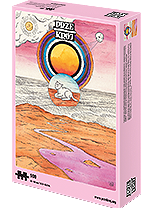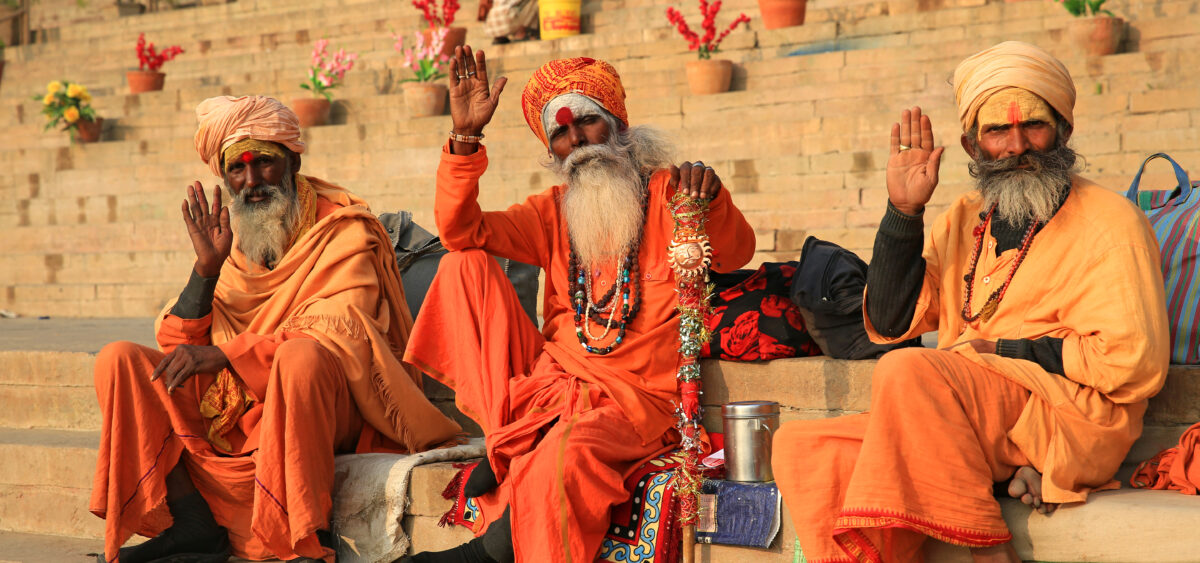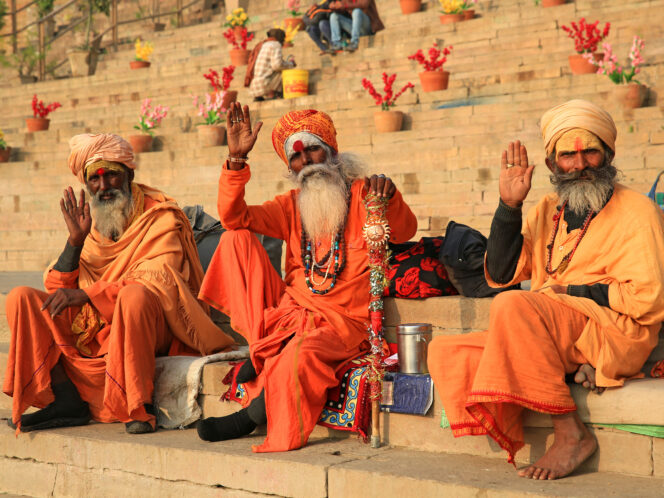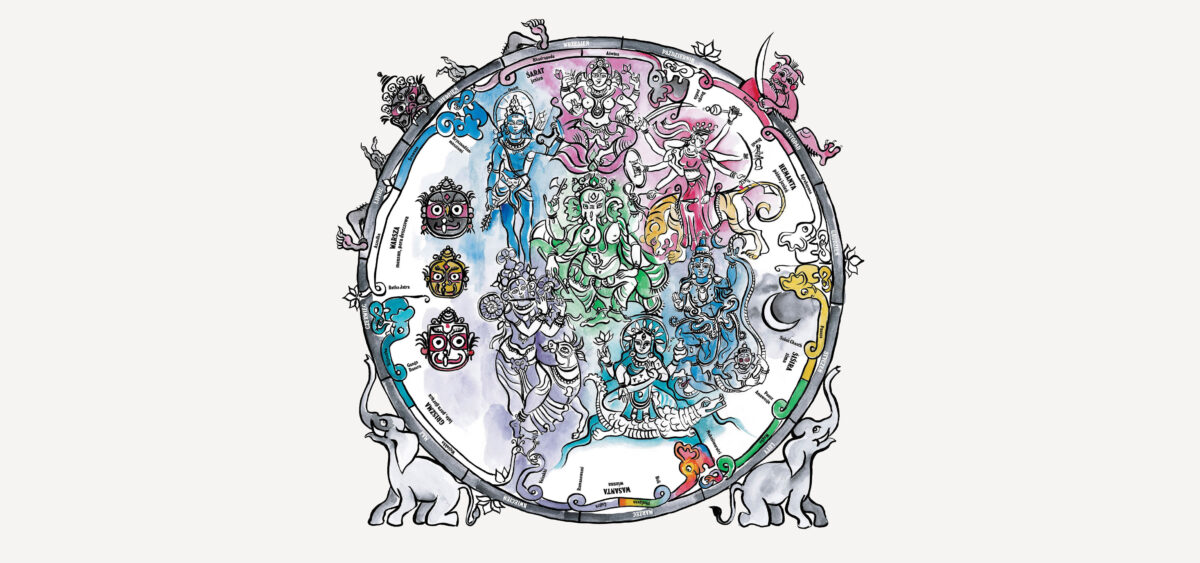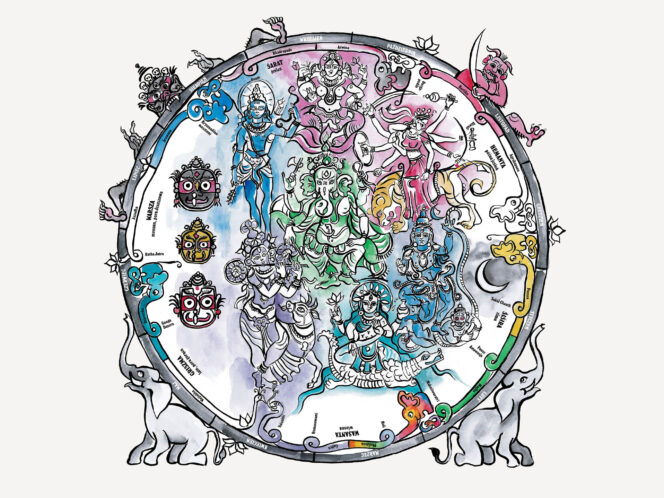
Hindus, Muslims, Buddhists, Sikhs, Jains, Christians, Zoroastrians, Jews, Baháʼís, eremites, teachers, holy men, charlatans… India’s religious spectrum is rich and diverse, and religion has an enormous impact on almost all areas of life.
Garlands of bright orange marigolds adorn the streets. Massive billboards feature images of priests. There aer ads for religious schools and meditation centers. I’m surrounded by thousands of people, and millions are present at this event. They are everywhere—on the sidewalks; clutching onto railings; climbing lampposts. Endless campsites surround the city. In Haridwar in the north of India—population two hundred thousand—there are currently five, six, or maybe even seven million pilgrims. Dressed in saffron robes, sadhus (from the Sanskrit: “good people”); ascetics; eremites; yogis. They came here to celebrate the Kumbh Mela (or the Pitcher Festival; kumbh refers to the vessel from which holy water is poured). It is the major celebration in Hinduism, record-breaking in terms of the number of participants, not only in India but also around the globe. Suffice to say that during the 2001 Kumbh Mela seventy million people celebrated in Allahabad (now Prayagraj), and eighteen years later this number went up to 120 million. It should be noted, however, that this is the total number of all pilgrims who passed through the city over two months. This is why the Kumbh Mela is known as the largest religious assembly in human history.
I follow the pilgrims towards the ghats, the concrete stairs on the waterfront, where they can take a cleansing dip in the water. They traveled here to seek forgiveness for their sins and atonement (prāyaścitta), to broaden their awareness and strengthen their willpower, and to finally begin a new chapter; a better life. Both the tirtha (place of pilgrimage) and the dip in the water are stages on the path to achieving moksha, i.e., liberation from saṃsāra—the cycle of birth and death. Importantly, the water used to wash the body must come from one of the sacred rivers: the Ganges, Jamuna, Godavari, Shipra, or the underground Sarasvati. The Kumbh Mela is celebrated alternately every twelve years in one of the four cities of Prayagraj, Haridwar, Ujjain, or Nashik, meaning that once every three years somewhere in India you can take a cleansing bath.
This ritual has a long history. Descriptions of similar practices can be found in ancient Vedic texts, including the famous epic poem Mahabharata. In it, one of the protagonists—submerged in despair and sadness following the great Kurukshetra War—travels to Prayagraj to atone and achieve peace of mind by bathing in the Ganges. Peace of mind and also of the body—Indian writings feature descriptions of miraculous healings that took place during successive congregations. According to contemporary scholars of religion, these can be explained by a powerful unity forming within the community. In such circumstances, pilgrims tend to think in terms of “we” rather than “I,” which helps them to free themselves of some


